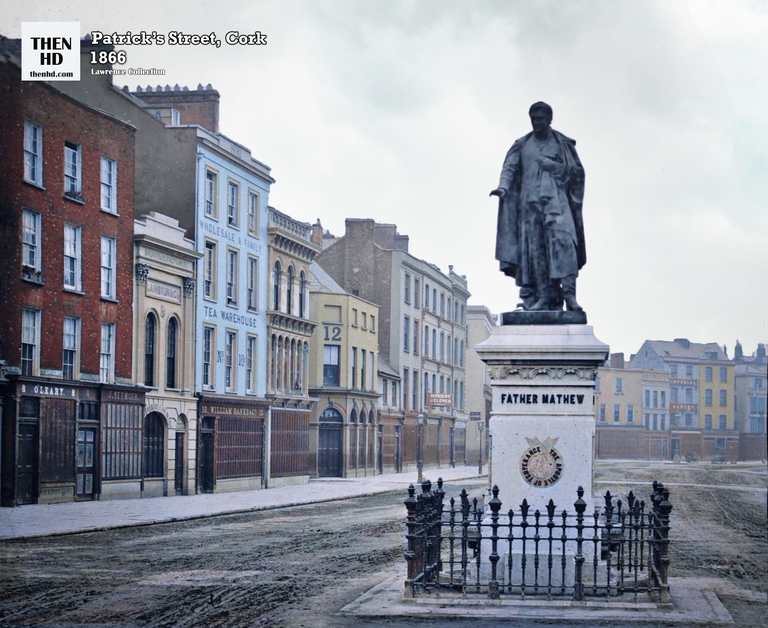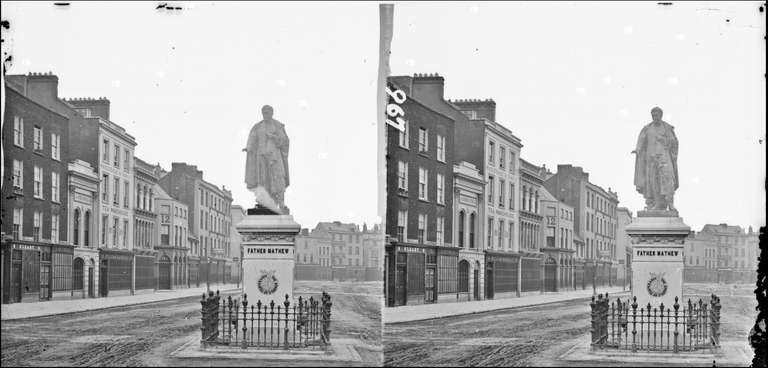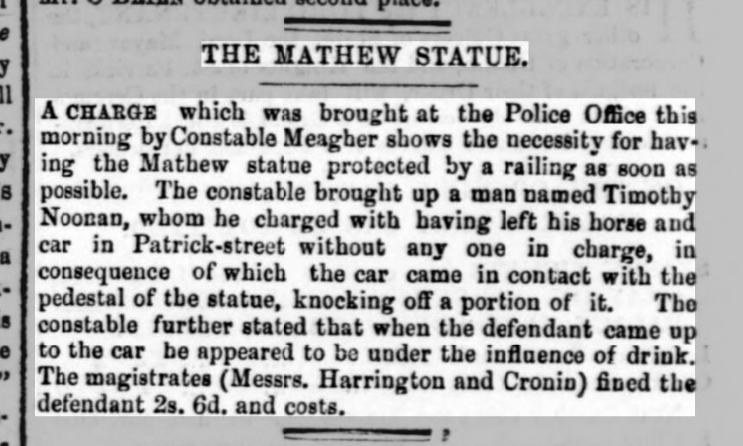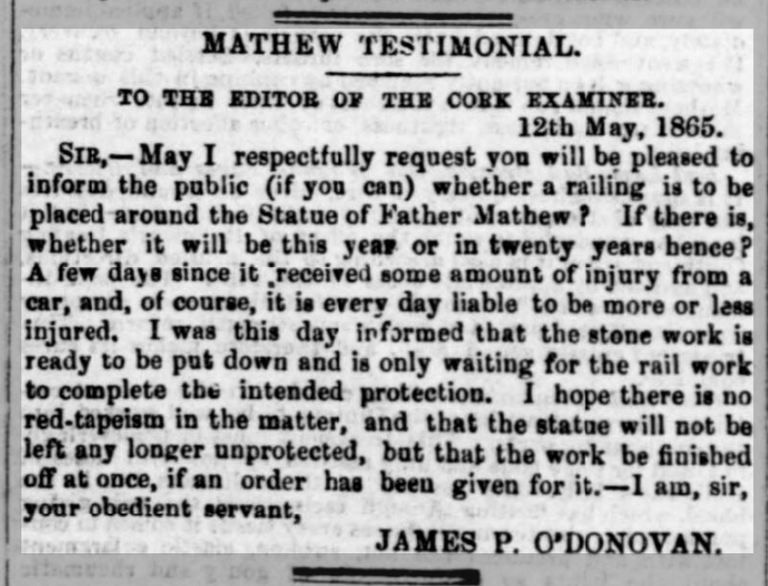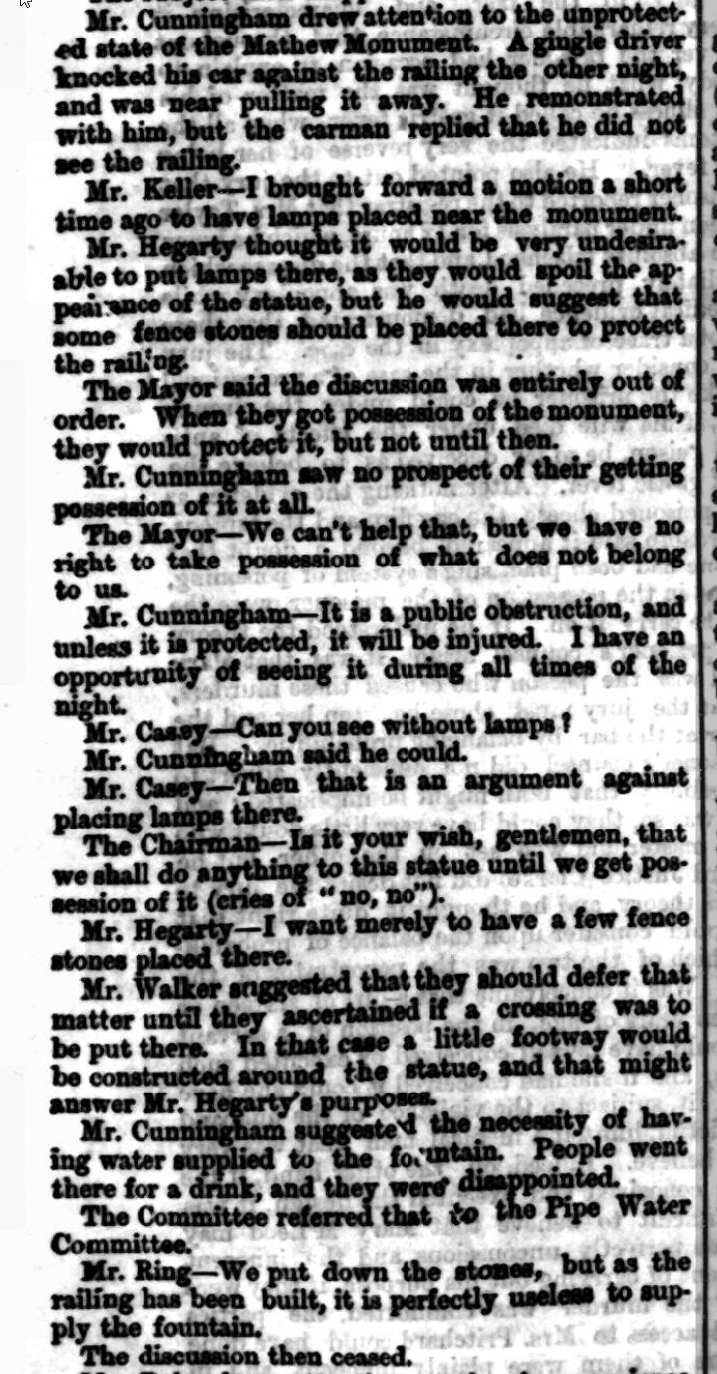Patrick's Street, Cork, 1866
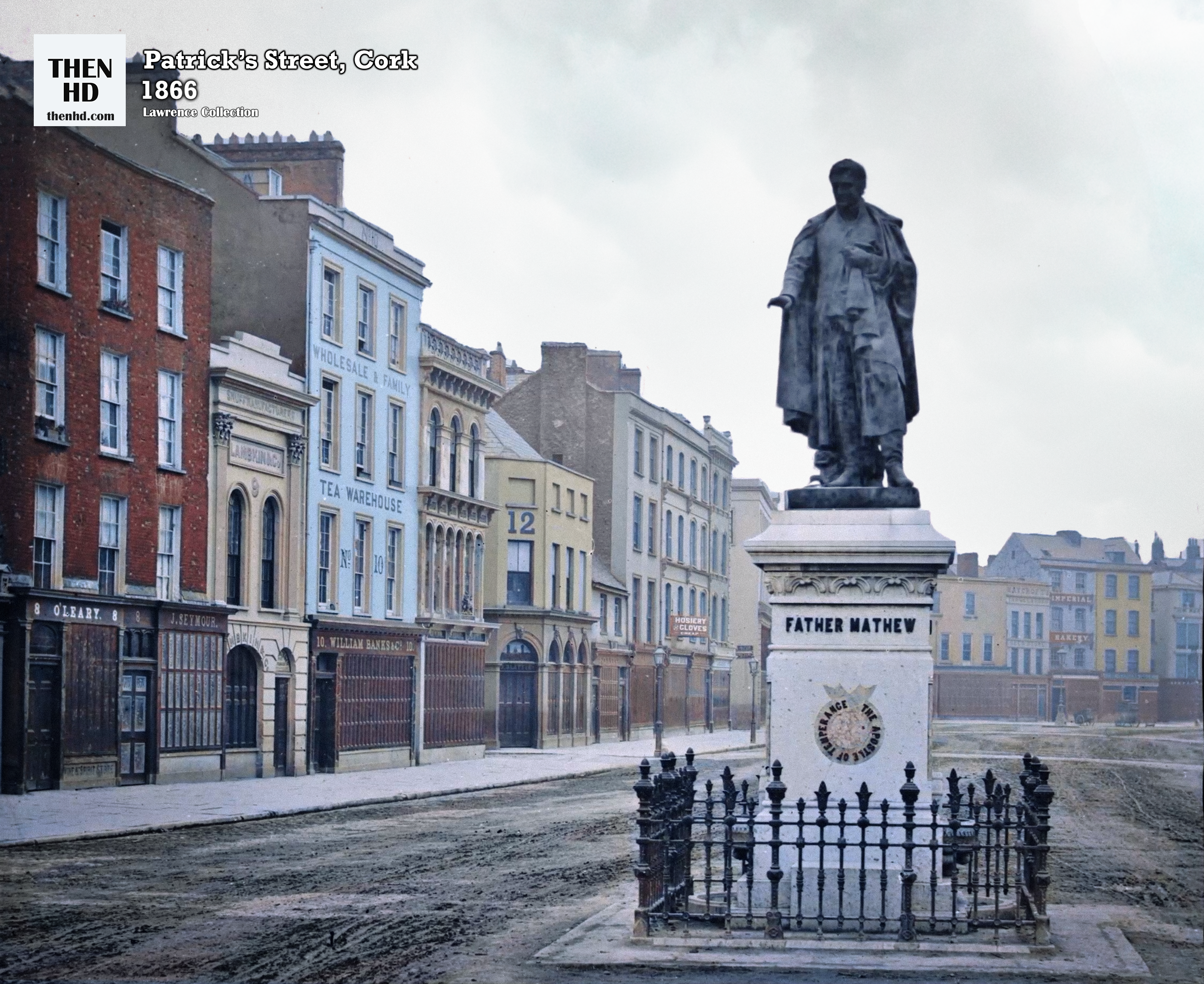
Among the early photographs featuring the statue, this is the only one that lacks the wheel-guard stones seen at its four external corners, implying this could be the earliest surviving image of the statue.
An intriguing tale unfolds when one observes the railings encompassing the statue. One might wonder why the designers would position water fountains alongside the statue, only to encase it all within railings, thereby limiting access. As per accounts in contemporary newspapers, it appears that shortly after the statue's unveiling in October 1864, there were several occurrences of stray carts and carriages colliding with and damaging the statue. To prevent further such incidents, the railings were installed, though not without much debate and delay. It appears that red tape is not a solely modern phenomenon.
By 1900, the statue was elevated on a plinth, a feature that persists to the present day, despite the evolution of its surroundings over the years.
The statue stands as a testament to the efforts of a native of Tipperary who adopted Cork as his home and dedicated his life to battling the scourges of alcohol abuse, poverty, and disease during the 19th century.
